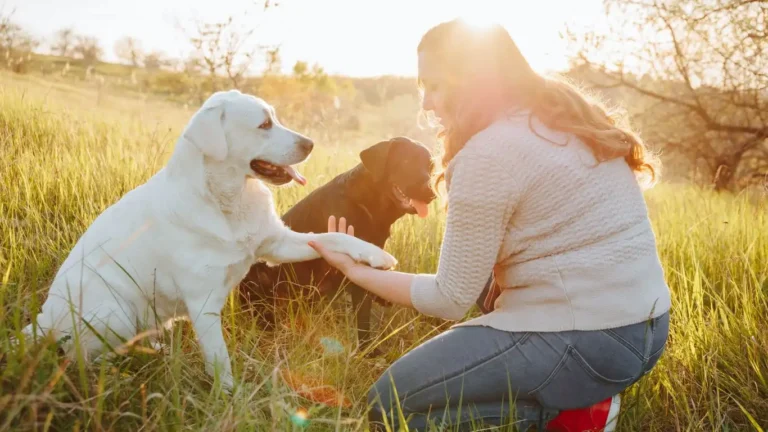Effective Strategies to Train Your Dog Not to Bolt Out the Door
If you’ve ever experienced that heart-stopping moment when your dog bolts out the front door, you know just how scary—and frustrating—it can be. As a Veterinary Technician with a special focus on nutrition, I’ve seen how important it is to keep our furry friends safe, and training them not to dash out unexpectedly is a key part of that. So, if you’ve been wondering how to train your dog not to bolt out the door, you’re in the right place. Let’s dive into some practical, tested strategies that not only work but also strengthen your bond with your pup.
Why Dogs Bolt Out the Door: Understanding the Behavior

First things first, why do dogs bolt out the door in the first place? It’s not just about being naughty or disobedient. Often, it comes down to instinct, curiosity, and sometimes fear. Dogs are naturally curious animals and the world outside that door is a playground full of new smells, sights, and sounds. From my years of hands-on work, I’ve noticed that dogs with high energy levels or those that aren’t mentally stimulated tend to be more prone to dashing out.
Another important factor is lack of training or unclear boundaries. When dogs don’t fully understand the rules around the door, the temptation to make a break for it can be overwhelming. Plus, some dogs bolt because they’ve learned that running through the door gets a big reaction from their owners—whether it’s laughter or panic—which reinforces the behavior.
Signs Your Dog Might Bolt
Before jumping into training, it helps to recognize the signs that your dog is about to make a run for it. Some common warning signs include:
- Restlessness or pacing near the door
- Staring intently at the door or the outdoors
- Whining or barking when the door is opened
- Sudden bursts of energy or excitement as you approach the exit
Picking up on these cues early can give you the upper hand when it comes to preventing a bolt.
How to Train Your Dog Not to Bolt Out the Door

Now that we understand why dogs bolt, let’s talk training. The good news? It’s absolutely possible to teach your dog to wait patiently by the door. Here’s a straightforward approach that I’ve used both in clinical settings and with my own dogs.
Start With Basic Obedience: The Foundation of Safety
Before tackling door-specific training, make sure your dog has a solid grasp of basic commands like “sit,” “stay,” and “come.” These commands are the building blocks for controlling behavior at the door.
When my first dog was a puppy, reinforcing these basics was essential. Once he reliably sat and stayed on command, teaching him to wait at the door was much easier.
Use a Leash to Manage the Environment
One of the simplest ways to prevent bolting while training is to keep your dog on a leash when near the door. This gives you control over sudden impulses and allows you to guide your dog into the correct behavior.
Attach a leash before opening the door, and ask your dog to sit and stay. Only open the door when they are calm and waiting patiently. If they try to rush forward, gently close the door and start again.
Practice “Door Manners” Consistently
Training a dog not to bolt requires consistent practice. Every time you approach the door, practice these steps:
- Ask your dog to sit and stay away from the door.
- Reward calm behavior with treats or praise.
- Open the door slightly; if your dog remains calm, reward again.
- Gradually increase the door opening while maintaining control.
- Only allow your dog to pass through when given a clear release command.
Remember, patience is key. It took time for my energetic Labrador to learn this, but with repetition and rewards, the habit stuck.
Advanced Techniques to Prevent Door Bolting

Once your dog has the basics down, it’s time to level up with some advanced techniques that really cement good door manners. From my experience as a Veterinary Technician, the trick is to create a strong habit and clear expectations around the door, so your dog naturally stays put without needing constant reminders.
Teach a Reliable “Wait” or “Stay Back” Command
Building on the “sit” and “stay,” adding a specific command like “wait” or “stay back” can make a huge difference. This is a more precise cue your dog can associate with not moving forward, especially when the door is open.
I recommend practicing this with gradual increases in distraction. Start with the door closed, asking your dog to wait. Then slowly open the door a bit while your dog holds position. Reward generously for calmness and patience. Over time, your dog will understand that “wait” means no rushing, no matter what’s happening outside.
Use Management Tools to Support Training
Sometimes, even the best-trained dogs need a little extra help. Management tools like baby gates, exercise pens, or door barriers can provide a physical boundary that prevents escapes while your dog is still learning.
When I worked with a particularly speedy terrier, we installed a sturdy baby gate inside the house near the door. It wasn’t a long-term fix, but it gave the dog a safe space while reinforcing the door manners with training. This extra layer of control helps keep dogs safe and owners calm.
Practice Impulse Control Games
Impulse control is a big factor in door bolting. Teaching your dog to control their impulses will pay off in every area of life, not just door safety.
Games like “leave it,” “wait for it,” or “stay” during playtime are perfect for this. For example, hold a treat in your hand but only give it to your dog when they back off or wait patiently. These exercises build self-control and make your dog think twice before dashing off unexpectedly.
Personally, I found these impulse control drills really helped with my own dog, who was a natural door-dasher. It’s rewarding to watch that wild energy turn into calm, focused attention.
Common Mistakes to Avoid When Training Door Manners

Training a dog not to bolt out the door isn’t always straightforward, and some pitfalls can make it harder than it needs to be. Here are a few common mistakes I see (and have made myself) that you’ll want to watch out for:
Opening the Door Too Soon
One of the biggest errors is opening the door before your dog is fully calm and settled. Even a small crack can be a huge temptation for an impulsive dog. I always tell pet owners to have patience and only open the door when their dog is in the right mindset.
Inconsistent Rules and Expectations
If you sometimes let your dog bolt and other times enforce the rules, it’s confusing. Dogs thrive on consistency. From my professional viewpoint, a clear, consistent approach is what builds trust and reliable behavior.
Reacting Strongly to Bolting
As tempting as it is to panic or shout when your dog bolts, this can actually reinforce the behavior by making it more exciting for them. Instead, stay calm, and when you catch your dog, use a positive, gentle tone. Rewarding calm returns builds better habits than punishment.
How Nutrition Supports Training Success

Here’s a little insight from my veterinary nutrition background—training is easier when your dog feels their best. Proper nutrition fuels their brain and body, helping them focus during training sessions.
Dogs fed a balanced diet with the right nutrients tend to have better energy regulation and mental clarity, making them more responsive to commands. I always recommend discussing diet with your vet or a veterinary nutritionist to optimize your dog’s health and training potential.
In fact, some behavioral issues, including anxiety and hyperactivity, can be linked to dietary imbalances. If your dog struggles with impulse control or door manners, checking their nutrition might be a helpful step.
Supplementing Training with Mental and Physical Exercise
Training alone won’t fix bolting if your dog has pent-up energy. Regular walks, playtime, and mental challenges like puzzle toys or scent games are crucial to keep your dog satisfied and less likely to make a run for it.
In my years working with dogs, those with plenty of exercise and mental stimulation tend to be more relaxed and easier to train at the door. It’s all connected—body, brain, and behavior.
Real-Life Tips and Troubleshooting for Door Bolting

Training your dog not to bolt out the door isn’t always a smooth ride—trust me, I’ve been there. Even with the best methods, some dogs test boundaries and push limits. The key is staying patient and adapting your approach to your dog’s personality and learning style.
Make It a Family Effort
One of the biggest challenges I see in my work is when only one person in the household is consistent with training. Dogs quickly pick up on inconsistencies, so make sure everyone who interacts with your dog knows the rules and sticks to them. It’s the only way to build clear, lasting habits.
Manage Excitement at the Door
Doorways can be exciting hotspots for dogs. When visitors arrive or you’re getting ready to leave, dogs often get amped up. Here’s a tip from my own experience: teach your dog to greet calmly by having them sit and wait before they’re allowed near the door. Use treats and praise to reinforce calm behavior even when things get hectic.
Use High-Value Rewards
When working on door manners, high-value treats are your best friend. Think small pieces of cooked chicken, cheese, or special dog treats that your pup absolutely loves. These rewards make the training more motivating and memorable. I always keep a stash handy during training sessions because it makes a world of difference.
Address Anxiety and Fear-Related Bolting
Sometimes bolting isn’t just about excitement or curiosity—it can be fear or anxiety. Dogs scared of loud noises, strangers, or certain stimuli may bolt as a way to escape. If you suspect your dog’s door dashing is anxiety-driven, it’s important to address the root cause.
Consulting a veterinary behaviorist or a qualified trainer who specializes in fear and anxiety can provide tailored strategies and sometimes medication to help your dog feel more secure. From my professional background, I’ve seen that combining behavior modification with nutritional support for anxiety (like calming supplements or diets) can be very effective.
Tools and Technology That Can Help

In this modern age, technology can also lend a hand in keeping your dog safe and well-trained around doors.
Smart Collars and GPS Trackers
While the goal is to prevent bolting, having a GPS tracker on your dog’s collar offers peace of mind in case they do manage to escape. These devices allow you to quickly locate your dog and bring them home safely.
Automatic Doors and Barriers
Automatic pet gates or smart barriers that activate based on your dog’s collar can provide an extra layer of safety. These tools aren’t replacements for training but excellent supplements, especially in busy households or multi-pet homes.
Final Thoughts on How to Train Your Dog Not to Bolt Out the Door
Door bolting is a common but manageable behavior with the right approach, patience, and consistency. As someone who’s worked closely with countless dogs and their families, I can confidently say that training combined with understanding your dog’s unique needs creates the best results.
Remember, it’s not about perfection but progress. Celebrate small wins, stay consistent, and keep the training positive. Your dog’s safety—and your peace of mind—are worth every effort.
References
Disclaimer
This article is for informational purposes only and is based on my personal experience as a Veterinary Technician and general knowledge in dog behavior and nutrition. It is not a substitute for professional veterinary advice, diagnosis, or treatment. Always consult your veterinarian or a certified dog trainer for advice tailored to your pet’s specific needs.





